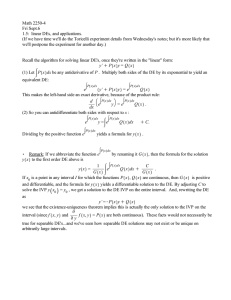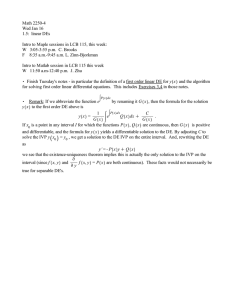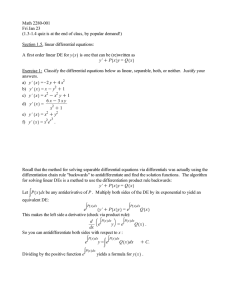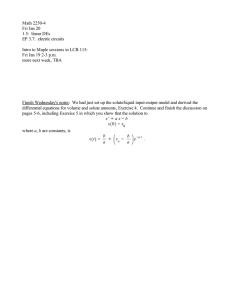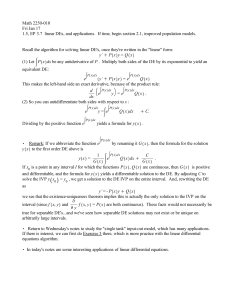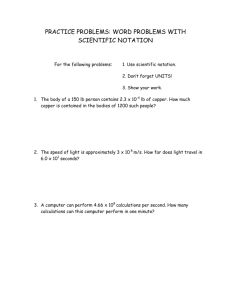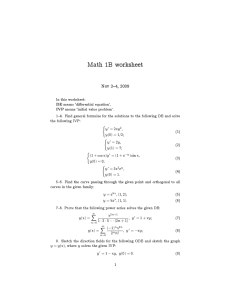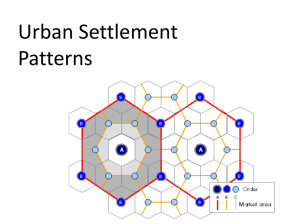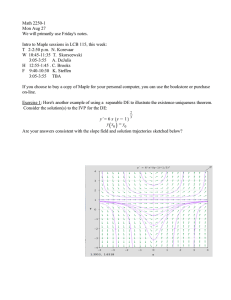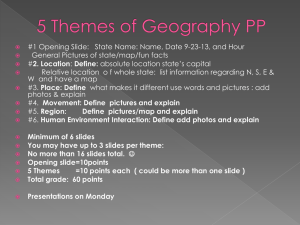Math 2250-1 Wed Aug 29 1.5: linear DEs
advertisement
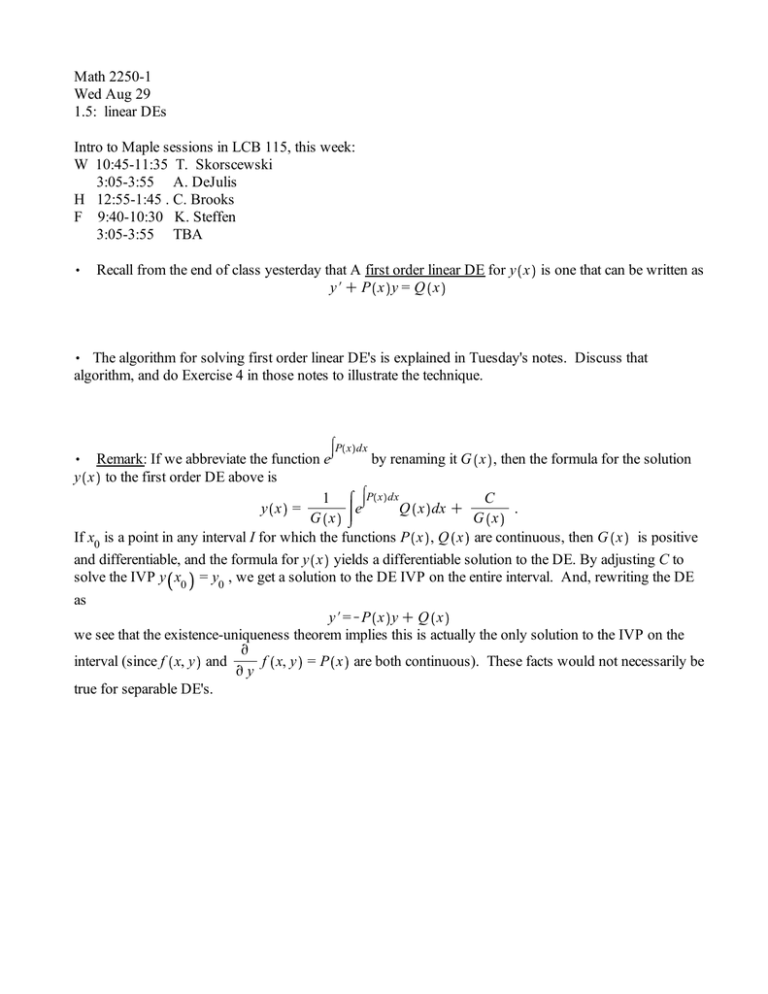
Math 2250-1 Wed Aug 29 1.5: linear DEs Intro to Maple sessions in LCB 115, this week: W 10:45-11:35 T. Skorscewski 3:05-3:55 A. DeJulis H 12:55-1:45 . C. Brooks F 9:40-10:30 K. Steffen 3:05-3:55 TBA , Recall from the end of class yesterday that A first order linear DE for y x is one that can be written as y#C P x y = Q x , The algorithm for solving first order linear DE's is explained in Tuesday's notes. Discuss that algorithm, and do Exercise 4 in those notes to illustrate the technique. P x dx , Remark: If we abbreviate the function e by renaming it G x , then the formula for the solution y x to the first order DE above is P x dx 1 C y x = e Q x dx C . G x G x If x0 is a point in any interval I for which the functions P x , Q x are continuous, then G x is positive and differentiable, and the formula for y x yields a differentiable solution to the DE. By adjusting C to solve the IVP y x0 = y0 , we get a solution to the DE IVP on the entire interval. And, rewriting the DE as y#=KP x y C Q x we see that the existence-uniqueness theorem implies this is actually the only solution to the IVP on the v interval (since f x, y and f x, y = P x are both continuous). These facts would not necessarily be vy true for separable DE's. Exercise 1: Find all solutions to the linear (and separable) DE 6 xK3 x y y# x = x2 C 1 Hint: as you can verify below, the general solution is y x = 2 C C x2 C 1 > with DEtools : dsolve 3 2 K . An extremely important class of modeling problems that lead to linear DE's involve input-output models. These have diverse applications ranging from bioengineering to environmental science. For example, The "tank" below could actually be a human body, a lake, or a pollution basin, in different applications. For the present considerations, consider a tank holding liquid, with volume V t (e.g units l ). Liquid l gm flows in at a rate ri (e.g. units ), and with solute concentration ci (e.g. units ). Liquid flows out at a s l rate ro , and with concentration c0 . We are attempting to model the volume V t of liquid and the amount of solute x t (e.g. units gm ) in the tank at time t , given V 0 = V0 , x 0 = x0 . We assume the solution in the tank is well-mixed, so that we can treat the concentration as uniform throughout the tank, i.e. x t gm co = . V t l See the diagram below. Exercise 2: Under these assumptions use your modeling ability and Calculus to derive the following differential equations for V t and x t : a) The DE for V t , which we can just integrate: V# t = ri K r0 t so V t = V0 C 0 ri t K r0 t dt b) The linear DE for x t . x# t = ri ci K ro co = ri ci Kro x# t C ro V x t = ri ci x V Often (but not always) the tank volume remains constant, i.e. ri = ro . If the incoming concentration ci is also constant, then the IVP for solute amount is x#C a x = b x 0 = x0 where a, b are constants. Exercise 3: The constant coefficient initial value problem above will recur throughout the course in various contexts, so let's solve it now. Hint: We will check our answer with Maple first, and see that the solution is b b Ka t x t = C xo K e . a a Exercise 4: Use the result above to solve a pollution problem IVP and answer the following question (p. 55-56 text): Lake Huron has a pretty constant concentration for a certain pollutant. Due to an industrial accident, Lake Erie has suddenly obtained a concentration five times as large. Lake Erie has a volume of 480 km3 , and water flows into and out of Lake Erie at a rate of 350 km3 per year. Essentially all of the inflow is from Lake Huron (see below). We expect that as time goes by, the water from Lake Huron will flush out Lake Erie. Assuming that the pollutant concentration is roughly the same everywhere in Lake Erie, about how long will it be until this concentration is only twice the background concentration from Lake Huron? http://www.enchantedlearning.com/usa/statesbw/greatlakesbw.GIF a) Set up the initial value problem. Maybe use symbols c for the background concentration (in Huron), V = 480 km3 km3 r = 350 y b) Solve the IVP, and then answer the question.
